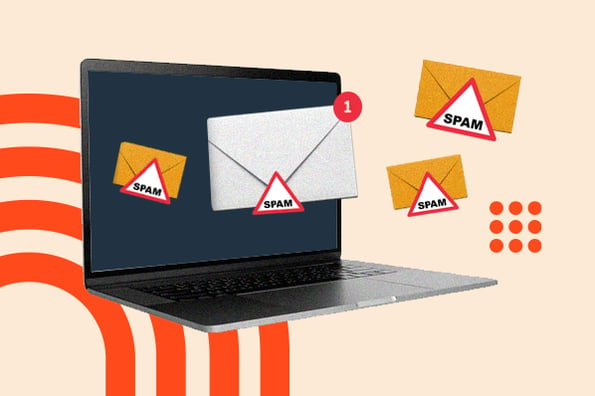I‘ve been running HubSpot’s Marketing Daily emails for about as long as I’ve been with the company (a slight nudge for you to subscribe), so I know a thing or two about getting your marketing emails to the right inbox.

I also know a lot about avoiding spam trigger words and filters. Though avoiding trigger words isn‘t enough to evade the robust systems of spam filters, it’s good to know them to keep your marketing emails in good standing with email providers like Google Mail.
To ensure your marketing emails reach your target audience, here‘s a list of spam trigger words and habits to steer clear of in your messages. But first, let’s get into the details of spam trigger words.
Spam List: Words to Avoid When Possible
What are spam trigger words?
Spam trigger words are keywords and phrases that alert email providers that a message could likely be spam. Emails containing these words would then be sorted into the dreaded email graveyard that is your inbox’s spam folder — never to see the light of day again.
Some spam trigger words are easier to avoid in marketing emails than others. For example, you don’t have to refer to your email recipients as “dear” in your marketing emails (in fact, you shouldn’t).
However, avoiding specific calls to action like “Act now!” or “Discount” could be difficult, primarily if you sell products and services.
Fortunately, spam trigger words aren’t as relevant as they used to be now that inbox service providers (ISPs) have more sophisticated methods of determining if an email is spam.
That said, I strongly urge you to be aware of words and phrases to avoid (or use sparingly) to ensure your emails reach your target recipients and avoid spam folders.
How to Avoid the Spam Folder
Here are some tips to help you protect your brand’s reputation and ensure your emails reach the inbox.
1. Send targeted content to those who have asked to receive it.
In my experience, sending marketing emails to contacts who have consented will result in positively engaged mail.
It’s also essential to send mail that contacts are expecting to receive.
For example, I only send Marketing Blog Daily emails to contacts subscribed to receive them. I do not send them to our weekly email subscribers. Contacts requesting a weekly newsletter may engage negatively if they’re emailed daily.
This may include leaving it unopened or taking more drastic measures like unsubscribing or marking it as spam.
In addition to obtaining consent and being thoughtful with outreach, I also suggest protecting a strong reputation by not sending materials to those who have stopped engaging with your emails.
It’s normal for lists to depreciate and for contacts to become unengaged. It’s important to start thoughtfully suppressing unengaged contacts before they start dragging down engagement rates and impacting reputation.
This strategy is often accompanied by a sunset policy, a plan for managing contacts that have stopped engaging.
Pro-Tip: Always include a visible unsubscribe link in your emails. This will help avoid spam triggers and will help ensure your recipients are choosing to still remain subscribed.

2. Use the same name for every email.
I always include the same sender name for every HubSpot Marketing email I send: HubSpot Blog, Marketing. Spammers will often change their sender name between emails to confuse recipients.
So, ensure your sender name is consistent and authentic so you don‘t get lumped in with the fakers. Be authentic by using your company name, brand name, or person’s name.
… (content truncated for brevity)

![→ Download Now: The Beginner's Guide to Email Marketing [Free Ebook]](https://no-cache.hubspot.com/cta/default/53/53e8428a-29a5-4225-a6ea-bca8ef991c19.png)